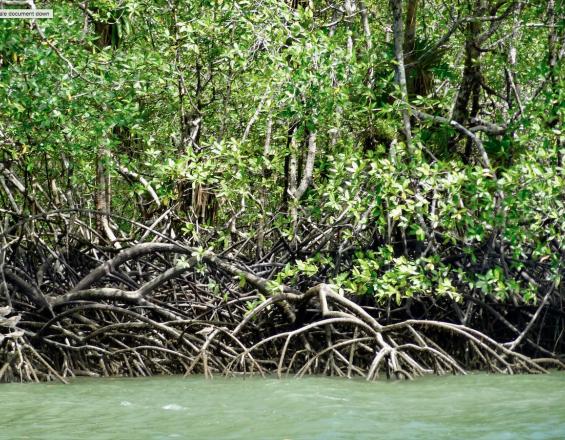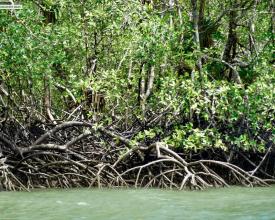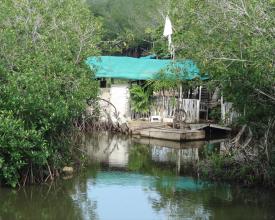
Projets pilotes de restauration des écosystèmes de mangrove à Ciénaga de la Virgen (Cartagena, Colombie)

Le programme EbA en Colombie collabore avec le bureau du maire, les jardins botaniques, les ONG locales et les communautés dans la mise en œuvre de projets pilotes pour la restauration des mangroves dans des zones particulièrement vulnérables du lac côtier de Ciénaga de la Virgen. Ces activités font partie d'une initiative plus large qui vise à soutenir le plan de lutte contre le changement climatique de la ville (Plan 4C) et le cadre national pour l'adaptation (basée sur les écosystèmes) de la politique colombienne de lutte contre le changement climatique.
Contexte
Défis à relever
Environnement : *La zone côtière de Carthagène est fortement exposée aux fortes précipitations, qui provoquent des inondations, des périodes de sécheresse et des ondes de tempête. *Les zones humides intérieures, les forêts et les mangroves ont été dégradées en raison de pratiques non durables d'utilisation et de conversion des terres. *En conséquence, les communautés côtières, les infrastructures urbaines et rurales, mais aussi les activités du secteur privé (en particulier le tourisme) sont très vulnérables. Socioéconomiques : *Le tourisme, source importante de revenus pour les secteurs privé et public, est affecté par la dégradation des écosystèmes et les risques climatiques. *Cartagena, centre financier et économique de la Colombie, est exposée aux risques climatiques. *Il y a un manque d'instruments financiers privés et publics qui peuvent garantir la durabilité économique des mesures d'EbA à long terme. *Le suivi et l'évaluation des mesures d'EbA restent difficiles en raison de la complexité des modèles de risque et de l'absence d'indicateurs d'impact unifiés au niveau mondial ou national.
Emplacement
Traiter
Résumé du processus
Blocs de construction
Alignement des activités sur le cadre national et infranational existant pour l'adaptation au changement climatique
Facteurs favorables
Leçon apprise
Prioriser les mesures d'EbA en combinant les données empiriques et la planification participative
Facteurs favorables
Leçon apprise
Former et renforcer des alliances pour la communication, le développement des capacités et la mise en œuvre, y compris le financement
Facteurs favorables
Leçon apprise
Impacts
*L'EBA - en tant que sujet assez spécifique - a été inscrit à l'ordre du jour politique et institutionnel de Carthagène. *Le Plan 4 C a pris vie et s'est transformé en une plateforme multipartite opérationnelle. *Le cadre stratégique de Cartagena pour l'adaptation au changement climatique a été traduit en mesures d'adaptation concrètes (basées sur les écosystèmes) et en (nouvelles) alliances entre les parties prenantes. *Le dialogue régulier et les activités conjointes de développement des capacités contribuent en permanence à une compréhension commune des défis et des possibilités d'adaptation (basée sur les écosystèmes) au changement climatique à Cartagena. *Les communautés locales et le secteur privé s'intéressent de plus en plus à la mise en œuvre de mesures d'adaptation dans le cadre du Plan 4C. *Les autorités locales ont intégré l'approche EbA dans leurs plans, politiques et programmes de réduction de la vulnérabilité au changement climatique.
Bénéficiaires
Autorités de Cartagena, Instituto de Investigaciones Marinas y Costeras (INVEMAR), communautés et organisations environnementales, secteur des affaires et de l'hôtellerie, communauté universitaire.









